If you’ve got a plant dilemma, there’s a reasonable chance that sphagnum moss is the answer.
Honestly, this wonder material is ridiculously versatile and has all sorts of uses (it was even used to treat wounds in World War 1).
Whether you’re growing, attaching, or propagating plants – sphagnum moss is here to help.
Though, the term itself is a little ambiguous.
Partly because both live sphagnum moss and the dried form are both used (often for overlapping purposes) and because another popular material, “peat moss,” is from the same source.
Confusing right? Well, in this article we’re going to deep dive on the natural marvel that is sphagnum moss, to help you find out how to use it and what type you’ll need.
Let’s dive in!

Terrarium Tribe is reader-supported. When you purchase through links on our site, we may earn an affiliate commission (at no further cost to you). 💜
What is Sphagnum Moss?
In the horticultural world, sphagnum moss is more of a material/tool than a plant.
Thanks to its many positive qualities, it’s commonly used to grow or mount plants of all kinds and has made itself an essential part of terrarium substrates.
Technically, though, Sphagnum is actually a genus of plants – and a large one at that.
There are well over 300 species, but because they’re so similar, you’ll still see everything sold under the umbrella label of “sphagnum moss.” Aside from the source/location, I’ve never seen anyone selling specific species of Sphagnum.
Which keeps it simple for us!
The thing is, it’s all from the same type of source anyway – peat bogs.
Sphagnum Moss vs Peat Moss
To understand the distinction, we first need to understand the source.
The term “peat” refers to a material that – much like coal – has been created through the compression of plant material over centuries.
Peat bogs are natural areas of wetlands that are characteristically high in peat (and form the basis of producing it).
Now, peat bogs are typically full of sphagnum moss. It plays a big part in their ecosystems, holding onto moisture, slowing decay, and providing nutrients to the local flora.
Here comes the distinction.
- Peat moss is the decaying organic matter from the bed of the peat bogs. It’s used more as a soil amendment as it’s essentially a nutrient-rich compost.
- Sphagnum moss is the actual moss harvested from the peat bogs. Sometimes, it’s kept live, but most often, it’s dried to produce a resilient fibrous material that still retains the same natural qualities.
With that out of the way, for the rest of the article, we’re talking pure sphagnum moss!
Top Benefits of Sphagnum Moss
We’ll get onto the specific use cases shortly, but for now, these benefits all apply to growing plants in sphagnum – either by itself or as part of a mix.
1. Highly absorbent – arguably, the most useful property of sphagnum moss is its ability to retain huge volumes of water for its weight. When used with plants, this makes it much easier to supply consistent moisture and helps to boost humidity.
2. Fluffy texture – the fibrous nature of this material allows for plenty of airflow and resists compaction, both of which are vital for healthy plant roots (particularly tropical ones).
2. Antimicrobial properties – polysaccharides in the cell walls of sphagnum moss are an effective anti-fungal, antibacterial and preservative agent. Great for keeping substrates fresh and healthy.
Types of Sphagnum Moss
Okay, so we’re onto pure sphagnum, but there are still a few different types available.
To be honest, they tend to share many of the same properties but with some key differences that might be important for your needs.
Dried/Preserved Sphagnum Moss
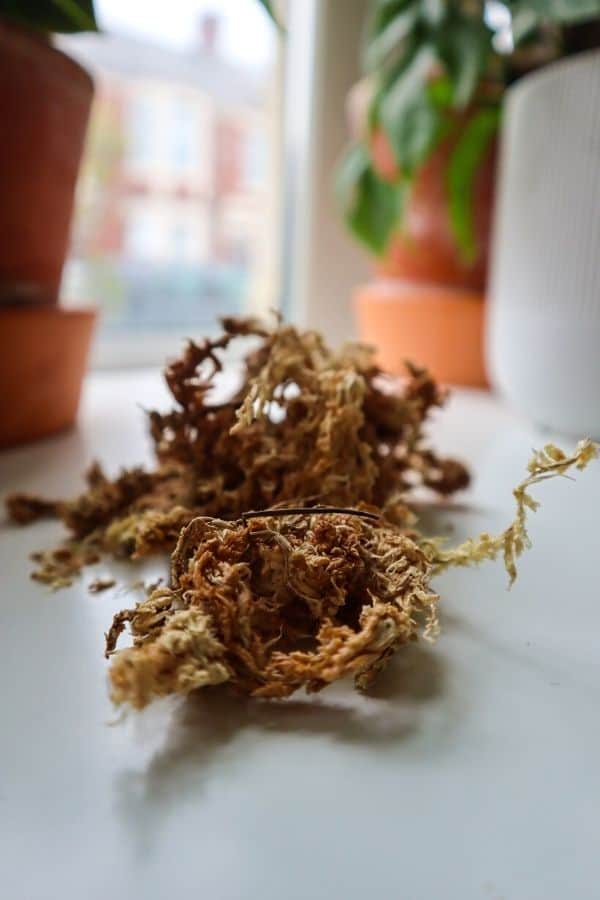
The majority of the time, sphagnum moss for sale is going to be like this.
Mostly in the form of long fibers (conveniently named long-fiber sphagnum moss) but sometimes sold as “milled sphagnum moss,” which is essentially a ground version.

Sphagnum Moss (Premium Long-Fiber)
High-quality, eco-friendly moss for optimal moisture retention.
Available on the Terrarium Tribe Store.
Though the popular ABG mix recipe recommends milled, I tend to prefer long-fiber and simply break it up myself as necessary.
Live Sphagnum Moss
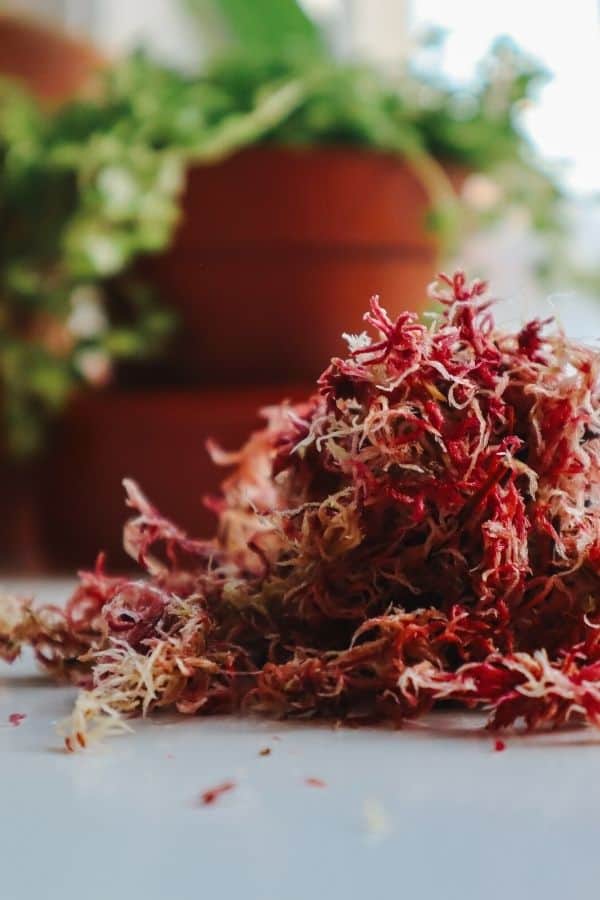
For me, the main positive of live sphagnum moss is the color.
It can come in all sorts of green and earthy varieties, but that pink really does pop!
Besides the obvious aesthetic benefits, you might like the idea of growing more of this fantastic material.
Plus, the live types of sphagnum are often preferred by different species of plants (and animals), e.g., carnivorous plants.
How to Use Sphagnum Moss
In a Substrate Blend
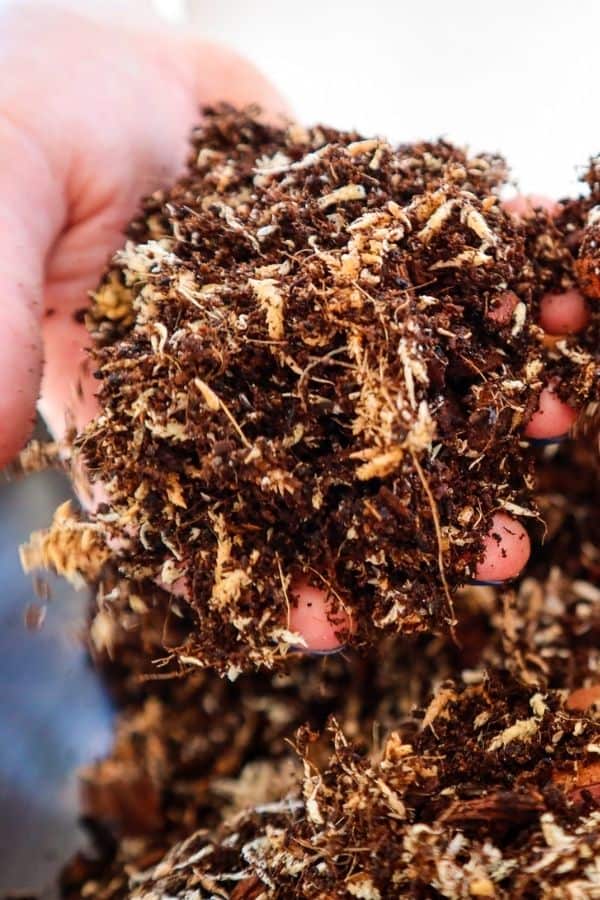
For all of the benefits outlined above, sphagnum makes for a fantastic addition to tropical substrate mixes.
Able to dramatically increase the water retention capacity of the mix, which will keep those moisture-loving plants happy, and it helps to boost humidity.
Some people like to go as high as 40-50% sphagnum, depending on the plants.
Check out our complete guide on how to make terrarium substrate for more help.
As a Terrarium Layer
A pure sphagnum moss layer in a terrarium is a useful element, too.
For terrariums with drainage layers (also known as false bottoms) it can be helpful to have a layer to act as a barrier between the substrate and the drainage element.
Something to stop any dirt from falling into the gaps in the drainage where water is supposed to go.
Sphagnum performs this function wonderfully whilst also bringing more of what makes it such a great substrate additive.
Growing/Mounting Epiphytes
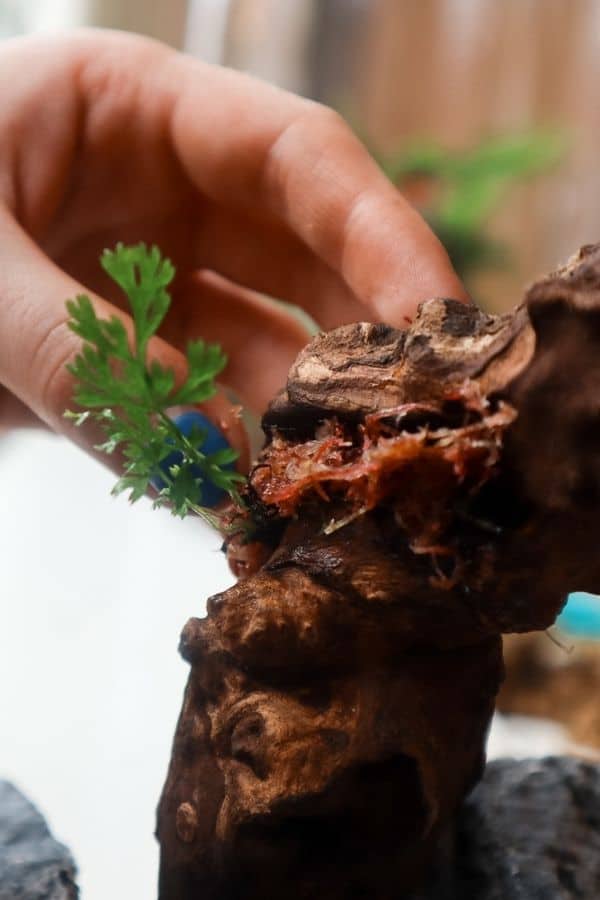
Epiphytes (plants that grow on other plants and objects) are naturally used to growing in areas of high moisture, humidity and airflow.
So, they need a very particular environment in the home or in a terrarium in order to grow properly.
Sphagnum moss is one of the best ways to recreate this.
You can simply bundle the roots or base of your epiphyte – depending on the species – and mount them in position. Whether that’s in the crooks of terrarium hardwood branches, nested in the fabric pocket of a living wall, or maybe even in a kokedama.
It’s particularly good for orchids and carnivorous plants.
And, it’s why sphagnum moss is a common choice for moss poles.
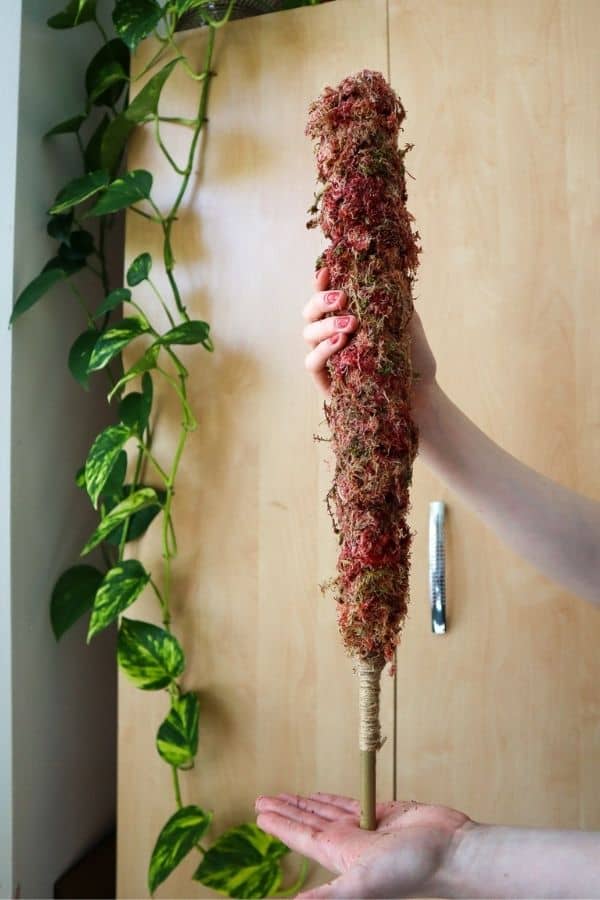
Propagating Plants
Starting seeds and rooting plant propagations both require humidity and moisture.
Of which sphagnum moss can supply in heaps (quite literally).
Simply pop your potential plant object into a small bundle of moist sphagnum moss – and ideally in a closed container like a terrarium – and you can expect them to root up readily.
In fact, if you ever buy plant cuttings online you’ll probably receive them bundled in sphagnum.
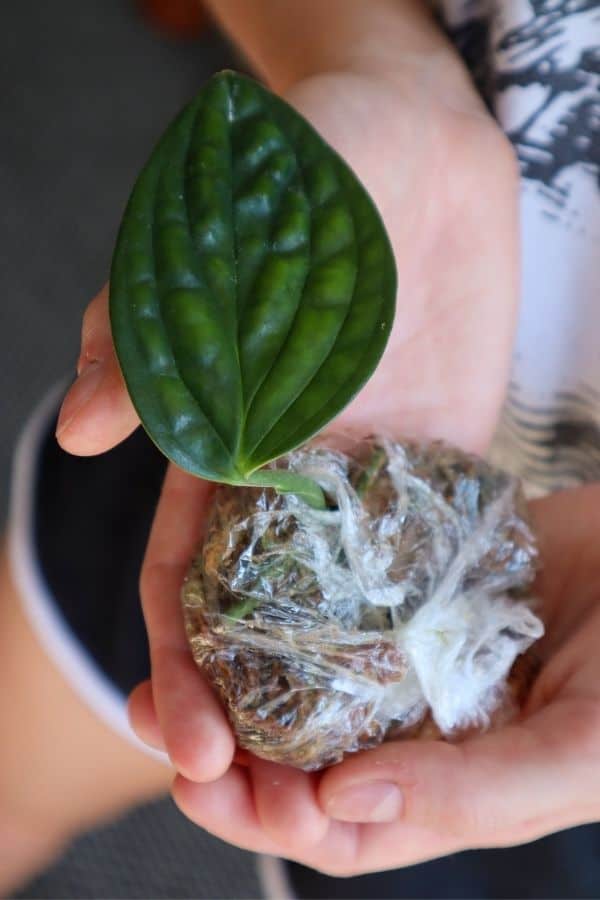
As a Houseplant Top Dressing
Having trouble boosting ambient humidity for your houseplants?
Forget misting them – no, really, it doesn’t really help.
Apply a sphagnum moss top dressing instead to provide a localized humidity boost. It’s the same principle as a pebble tray, really, but instead, the moss is holding onto – and slowly releasing – that moisture into the air.
Environmental Sustainability: Concerns and Alternatives
Sphagnum moss is a somewhat controversial materal, and for good reason.
Peat bogs are being drained at an alarming rate around the world, and that’s leading to both localized environmental collapse and global warming as these carbon sinks are destroyed.
Firstly, it’s why I personally don’t use peat moss at all. For me, there are lots of alternatives that do the job just as well and are much more sustainable, e.g., earthworm castings.
With sphagnum moss, you could argue that coco coir is a good alternative (and I do; it’s something I use in pretty much everything), but it still doesn’t match the water capacity of sphagnum.
So, I do personally use and recommend sphagnum moss – with one important caveat.
Please buy sphagnum moss from sustainable sources.
The sphagnum moss we have for sale is sourced from the Peruvian highlands, and our supplier works closely with the local harvesters to make sure the areas are protected and can regenerate between cycles.
Frequently Asked Questions
Sphagnum moss can be expensive due to its slow production rate and limited number of sustainable options.
Due to its natural preservative compounds, sphagnum moss lasts for a very long time. Often years before it begins to break down in any regular horticultural sense.
You can use sphagnum moss for a wide range of horticultural tasks, from mounting epiphytes,
Yes, there is a difference between peat moss and sphagnum moss, though their source is the same. Peat moss is the loose organic material from the base of a peat bed, whereas sphagnum moss is the live plant material from the top.
Though not dangerous in of itself, there is a fungal pathogen associated with sphagnum moss so it’s recommended to use gloves or wash your hands after handling it.
